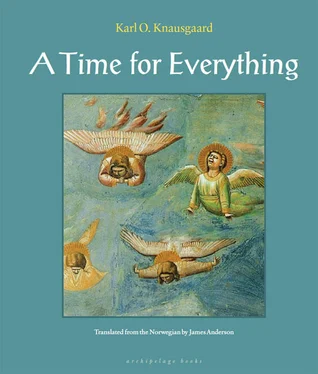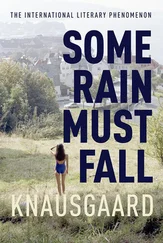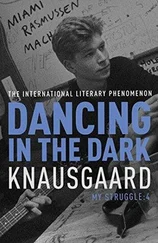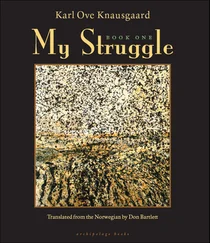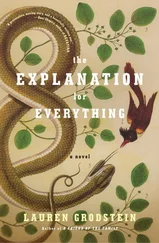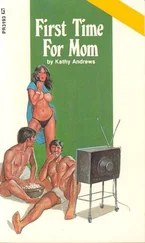His father didn’t say a word to anyone about what he’d done, as he realized that amputating part of oneself would say something about him, and he’d rather not have that. But, of course, the silence also “said” something, and only strengthened what he wished to avoid. When one summer’s day, taking a break from the haymaking with some others in the shade of the trees by the river and cooling themselves by sticking their feet into the ice-cold water, questions arose about his toe, which no one knew was missing, he decided to forestall the tale of “Lamech” by narrating what had happened himself. Noah hadn’t been present, but Anna had, and she’d mentioned how strangely talkative he’d been and that he’d said that the oddest thing about it all was that he could still feel the toe. It’s as if it’s there! he’d said. I think about curling it, and then I feel it curling. Even though it’s really lying rotting in the forest .
But of course it wasn’t. That toe he sometimes felt obey him was in his son’s possession, on ice on a beam in the cellar. The toe had gone from living things to dead things, whilst its original place of growth, his father, still lived, and thus proved the rule about parts dying once they lose contact with their place of origin. But Noah had also seen examples where the rule didn’t apply, or was postponed: once when he’d lifted a large stone up in the valley, there’d been a grass snake lying underneath it, and in his fright he’d let go of the stone, it had chopped the grass snake in two, and both parts continued to live. The rear part wriggled in front of his eyes; the front part, consisting of the head and about an inch of body, shot away into the grass like lightning and vanished. Hens with their heads cut off continued to flap their wings; sometimes they ran around for several minutes before they fell down. Even in human bodies death wasn’t absolute: nails and hair continued to grow after the body was dead, that could go on for weeks. The line between what was living and what was dead wasn’t absolute, neither was the boundary between what was dead and what was living. Weren’t living things composed of dead ones? Blood, wasn’t that dead? The skeleton? The hair? The nails? To solve this problem, he had for a while divided “dead things” in two: “dead living things” and “dead things.” The idea was that there was a difference between what had always been dead — stones, mountains, earth, etc. — and dead things that had once been alive — corpses, amputated body parts, broken-off branches, cut grass, etc. The advantage of this tabulation was that the division between categories wasn’t so fluid. The common denominator of dead things that had once been alive was that they rotted. Therefore everything that didn’t rot was either alive or dead:
LIVING THINGS
DEAD LIVING THINGS
DEAD THINGS
(which don’t rot)
(which rot)
(which don’t rot)
a human being
a human corpse
the skeleton
This had satisfied him for a long time. The problem of the skeleton had been solved: as it never rotted, it was a dead thing, even while it was part of a living thing, whereas blood and tissue, which rotted, were not. Most of a human being, for example, belonged only to the two first categories, “living things” and “dead living things,” and that applied to almost all living things. And then in addition there was a small portion of living things that came under “dead things”: the skeleton, the hair, the nails.
On closer consideration, however, even this wouldn’t do. What happened to “dead living things” after they’d rotted? They turned to dust. And as dust didn’t rot, it came under “dead things.” Living things that died were, in other words, dead in the same way as things that were dead. In principle there was therefore no difference between the skeleton/hair/nails and the rest of the human body, other than that the latter was converted into a dead thing, whereas the skeleton/hair/nails were dead all the time.
The arrangement was further complicated by his father’s gangrene, where what was rotting wasn’t dead, but living tissue.
And so it seemed reasonable to assume that everything belonged in the category of “dead things,” but that some “dead things” were alive. And this was the wall into which all his speculations eventually ran. What in fact was life? What did it mean that something was alive?
The question of fire also interposed itself here. Dead things always occupied a definite place, this applied to earth and rocks, mountains and lakes, as well as to skeletons and sand. They could move, they could even take on a different form, like when water turned to ice, but they could never disappear. If anything, this was the hallmark of dead things. But fire behaved differently. It quite simply ceased to exist — it didn’t just vanish from sight or hide itself away, but literally became expunged from the surface of the earth — only to reappear exactly as before, in a new place, at another time.
Did this mean fire was a living thing?
If the characteristic of living things was that they died sooner or later and then rotted — whether that happened prior to death, as in the case of his father’s toe, or afterward, as was normal — then fire wasn’t a living thing. It didn’t die, it didn’t rot, it just vanished. But it shared many of the features of living things. It had a will, it could move by its own power (and not merely fall, like water and rocks, or be blown by the wind, like clouds and dust), it had a lust, huge and insatiable, and it was cunning, it could hide in embers under ashes and suddenly flare up long after those who had chased it and attempted to put it out had left the scene, when it might continue its ravages in peace and quiet. Noah had himself borne witness to all this. When he was small, before he’d begun to go out at night and had to stay indoors except on foggy or heavily overcast days, his father’s great concern for him had manifested itself, among other things, in the burning of stubble in the evening and at night, so that Noah, who from a small boy had been transported by everything that had to do with bonfires, conflagration, and lightning, could take part. They were some of his best memories. The low flames that glided across the field like a river of fire, surrounded by darkness on all sides, which made them stand out with unprecedented sharpness: he saw how they curled over the field, only to rise occasionally in sudden tongues, with a light in which all the colors of fire played: blue, red, green, yellow. The fire would be watched all the while, a long line of men followed it carrying big branches in their hands; if it veered even slightly to one side, or reared up in sudden walls, they would begin to wield their branches and beat it back. He remembered their movement as slow to the point of unreality. Sometimes, despite all this, they would lose control of the fire; aided by an unexpected gust of wind it could swerve off, take hold of the small bushes along the edge of the forest, and from there reach up to the lowest branches of the trees, and if they caught fire there was little anyone could do, other than stand by and watch and hope it would die out by itself. Tree after tree engulfed in fire in the darkness, that was how he remembered it, the air filled by a low roar, the soot-covered men who stood with open mouths and vacant eyes just staring at it. The smell of burnt straw that mingled with the smell of burning juniper and evergreens. His father’s decisiveness as he sent the men in to meet the fire from the meadow on the other side, the relief when it was over and the fire again under control.
What kind of force did fire contain? Where did it come from? And where did it go to when it disappeared? As fire clearly didn’t belong to either “living things” or “dead things,” nor had anything to do with the rejected third category “dead living things,” which now merely described a stage in the process, it was clear to Noah that fire had to be regarded as an entirely separate form of existence. But even this wasn’t easy to determine with absolute precision, its boundaries were fluid as well.
Читать дальше
